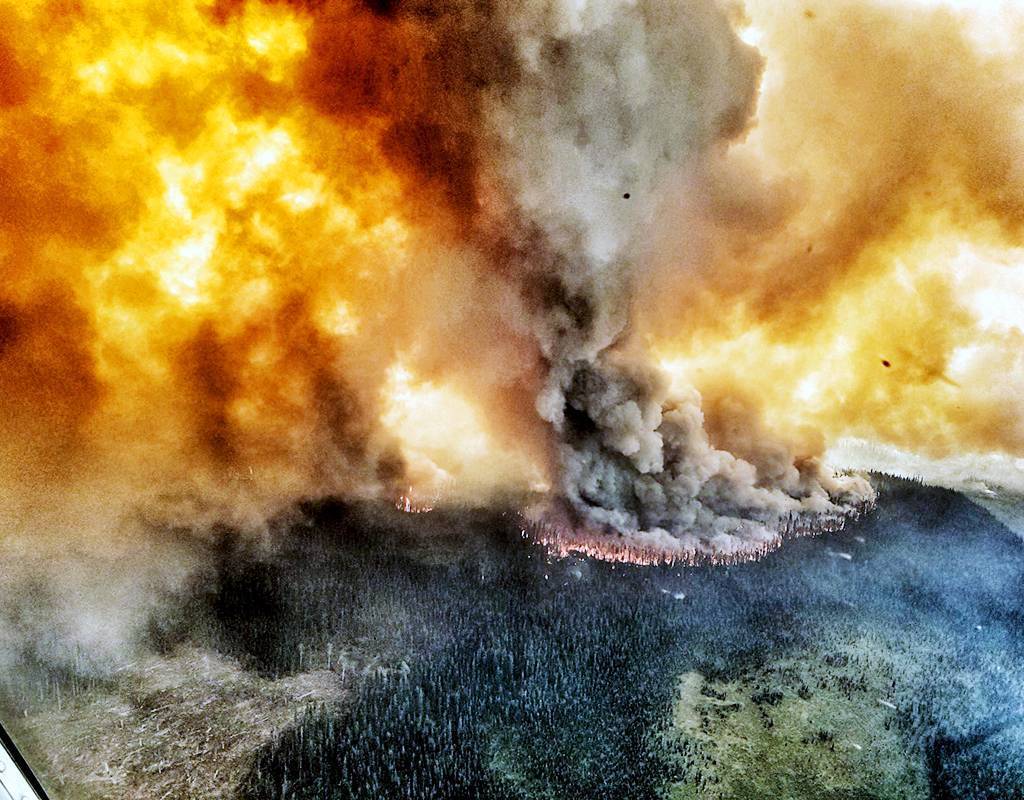
Another northern hemisphere wildfire season is upon us. Let’s see what the experts are forecasting. But first, a recap from 2019.
Looking at last year, with a wet winter and widespread summer rainfall, 2019 was a quiet year for wildfires in the United States, as was forecast. The 50,000 reported fires was the second least since 2000 and the 4.6 million acres burned was the sixth least on record, far below the 8.8 million acres burned in 2018 and nearly 10 million acres burned in 2017. California, which has been ravaged by fires in recent years, recorded only 260,000 acres burned with three fatalities, compared to two million acres burned and 100 deaths the year before.
Advertisement
Although the spring of 2019 saw extreme fire conditions in western Canada, especially in Alberta where over two million acres burned, things improved over the summer and overall the wildfire season was below normal. British Columbia welcomed a quiet summer and fall after enduring major fires the previous two years. As was the case with Canada, Europe was hard hit by wildfires in spring last year, but conditions there also improved over the summer.
One anomaly and worrisome development in an otherwise quiet summer was the occurrence of major wildfires in Siberia, Russia. Over 17 million acres were burned over July and August in this remote part of the world. Record high temperatures and drought likely linked to climate change were seen as causes with fires now being reported further poleward than ever before. Wildfires in South America also made headlines, with over two million acres burned. Especially hard hit was the rainforest region of Brazil.
Australia’s bushfire season extended from the southern hemisphere spring of 2019 into summer of 2020. It was the worst on record, with most of the damage being done in the spring. Over 25 million acres were burned, with more than half of that in the province of New South Wales.
Looking ahead to this summer, most of the United States had adequate precipitation over the winter of 2019/2020 and into the early spring. As a result, by the middle of May, only 325,000 acres had been burned, well below the average of 960,000 acres. An exception was southwestern Florida, where the typical winter dry season extended longer and has been more extreme than normal. A noteworthy wildfire near Southwest Florida Regional Airport outside of Ft. Myers damaged or destroyed over 3,000 rental cars that were being stored in a grassy field, and statewide, over 50,000 acres had been burned by mid-May.
In April, drought began to develop and intensify in the western U.S., especially along the West Coast from northern California to Washington and the central Rockies into the central plains. Long-range forecasts indicate that the West will continue warm and dry through the summer, seasonally dry in southern California but with below normal precipitation in the Pacific Northwest with drought conditions persisting and even expanding in coverage. The eastern half of the country, including Florida, is forecast to have above normal rainfall.
In terms of fire potential, the June forecast calls for “Above Normal” danger in northern California, southern Arizona, and into the central Rockies. In July and August, most of the Pacific Northwest is forecast to have “Above Normal” fire potential as the drought intensifies. Fire danger in the southern and central Rockies is forecast to lessen by August.
Advertisement
In Canada, much of the country is seeing normal to wet conditions. The exception is the prairie provinces, where pockets of drought have developed. Fire danger is already rated as “Extreme” in the southern parts of Alberta, Manitoba, and Saskatchewan. Unfortunately, conditions there are forecast to worsen during summer leading to “well above normal” wildfire danger, meaning “Very High” or “Extreme” danger. These conditions are forecast to expand westward into southern British Columbia. Much of the rest of Canada is predicted to have normal to above normal precipitation and low fire danger, especially in the east.
Across the Atlantic, patches of drought are occurring in primarily Eastern Europe. The extended forecast calls for increasingly above normal temperatures as the summer progresses throughout all of Europe. Dry conditions are predicted throughout the continent in June, especially in the east. In July, some improvement is forecast for central and Western Europe with the exception of Great Britain. Conditions will once again worsen in the west during August, although central Europe is forecast to have near normal rainfall. Eastern Europe remains dry. Forecast conditions would indicate wildfire problems in many areas.
Finally, wildfires are already raging in parts of Siberia again, and are already far larger than they were at this time last year. A remarkably warm and dry winter has primed the area, and summer there is forecast to be one of the hottest ever.



